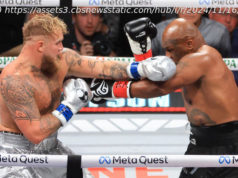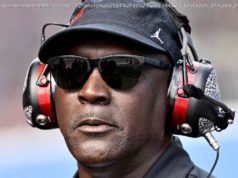As the United States goes for a historic three-peat, it’s USA vs. The World this summer in Australia and New Zealand. Financially, though, it’s no competition—with 11 Americans among the tournament’s top 15 earners.
The United States Women’s National Team has dominated international soccer for decades, and after two straight Women’s World Cup titles, they are favored to extend the streak to three. The Americans are just as unbeatable at the bank, however, claiming 11 of the 15 spots on the list of the highest-paid players at this summer’s tournament in Australia and New Zealand.
The Americans have considerable advantages over their overseas rivals after signing a landmark collective bargaining agreement with U.S. Soccer in May 2022 that equalized pay with the men’s national team from appearance fees, performance bonuses and commercial revenue. The two teams also pool their World Cup prize money, which is significant given that the women’s team will receive a $6.5 million share of the men’s winnings from reaching the Round of 16 in Qatar in December—exceeding the $6 million the women collected from their 2015 and 2019 World Cup wins combined. Factoring in their club salaries, most Team USA stalwarts are making about $800,000 on the field, depending on how many national-team appearances they made (and excluding any bonus from this summer’s performance). In many other countries, even the biggest stars struggle to crack half that total.
Thanks in part to the team’s massive success over the past 30 years, brands have also been more willing to support women’s soccer in the United States than in other markets, including European nations where the sport reigns supreme on the men’s side. Forbes estimates that six Americans at the World Cup are making at least $1 million off the field. Across every other roster at the tournament, there is just one player at that level: Spain’s Alexia Putellas, at $3.2 million off the field and $4 million overall.
And while the prize money for the Women’s World Cup has risen to $110 million—nearly quadruple 2019’s $30 million, with at least half earmarked for the players rather than their federations—it still remains a quarter of the men’s fund, and FIFA president Gianni Infantino said this week that he could not guarantee every player would receive her share. (The organization had said last month that all players at the tournament would receive at least $30,000, with members of the winning team getting $270,000.) Players from Australia, the tournament host, called out the disparity this month; meanwhile, the teams from Canada, England, Jamaica, Nigeria and South Africa have been battling with their respective national federations over compensation.
But the women’s game has momentum. FIFA hopes—perhaps overly optimistically—to eliminate the World Cup gender pay gap by the 2027 women’s tournament, and ticket sales and viewership numbers are trending up. This week, U.S. Soccer sponsor Visa renewed its vow that 50% of its investment would go toward the women’s team and other women’s soccer initiatives, and players are finding endorsement opportunities with new brands and in new categories. Research firm SponsorUnited found last year that the NWSL had seen growth of over 150% in the number of brands buying sponsorships or media since 2019, more than four times the rate in the league’s men’s counterpart, Major League Soccer.
With a highlight moment in a championship run this summer, a player could push up her marketing earnings by hundreds of thousands of dollars, and perhaps even a million, one industry insider tells Forbes.
Despite the imbalances between the men’s and women’s games, player compensation has come a long way from 1999, when the USWNT captured the World Cup in a moment that gripped the nation but then faced a massive drop-off in opportunities. The first fully professional women’s soccer league in the U.






